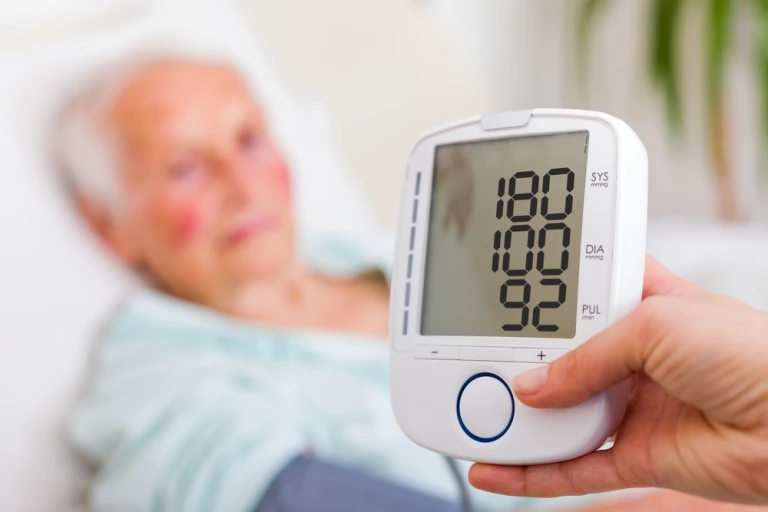How To Treat High Diastolic Blood Pressure Symptoms?
High diastolic blood pressure occurs when the diastolic pressure (the bottom number in a blood pressure reading) is consistently elevated. The diastolic pressure measures the force exerted on the walls of the arteries when the heart is at rest between beats. Moreover, lowering high diastolic blood pressure can sometimes be a real struggle. It involves addressing overall blood pressure levels, which include both systolic and diastolic readings.
Lifestyle changes such as managing weight, adjusting diet, and sometimes using medication are essential ways and serve as an effective high diastolic blood pressure treatment.
This article will delve into several high diastolic blood pressure treatment options for lowering high diastolic blood pressure.
What is High Diastolic Blood Pressure?
High diastolic blood pressure happens when the diastolic pressure remains high over time. A normal diastolic blood pressure is considered less than 80 mmHg, while diastolic hypertension is generally defined as having a diastolic pressure of 80 mmHg or higher. Moreover, a diastolic blood pressure reading of 90 mm Hg or higher is classified as stage 2 hypertension by the American Heart Association. At this level, a combination of lifestyle changes and blood pressure medications can help manage and lower blood pressure effectively.
High Diastolic Blood Pressure Symptoms
Diastolic hypertension can often be asymptomatic, especially in its early stages, making it challenging to detect without regular blood pressure monitoring. However, when symptoms do occur, they may include:
- Headaches
- Dizziness
- Blurred Vision
- Shortness of Breath
- Nosebleeds
- Chest Pain
- Fatigue
- Palpitations
It is essential to realize that it may vary from person to person.
Read More: High Blood Pressure Symptoms
High Diastolic Blood Pressure Causes
High diastolic blood pressure is influenced by various factors, ranging from lifestyle choices to underlying medical conditions.
Those are:
- Genetics
- Age
- Diet
- Physical inactivity
- Obesity
- Alcohol consumption
- Smoking
- Stress
- Medications
- Hormonal Disorders
- High Salt Intake
Genetics plays a significant role, as individuals with a family history of hypertension are more likely to develop high diastolic blood pressure. Other than that, aging also contributes, as blood vessels naturally lose elasticity over time, raising diastolic blood pressure. However, understanding these causes can help in developing effective high diastolic blood pressure treatment.
Can Water Lower Diastolic Blood Pressure?
Research from past studies suggests that drinking water may reduce systolic blood pressure, but its effect on diastolic blood pressure remains unclear. However, further studies are needed to understand the potential impact of hydration on diastolic blood pressure levels.
High Diastolic Blood Pressure Treatment – What You Need to Know
Managing high diastolic blood pressure can be a combination of lifestyle changes and adherence to certain medications prescribed for it. Some of the effective high diastolic blood pressure treatment options are as follows:
- Medication: Religiously following prescribed blood pressure medications as directed by a healthcare provider is essential for effective management. Moreover, setting daily reminders can help ensure consistency.
- Weight Management: Another important way to treat high diastolic pressure involves maintaining a moderate weight. It can potentially alleviate strain on the heart and lower diastolic blood pressure. Even a minor weight loss can lead to significant reductions in blood pressure.
- Physical Exercise: Engaging in moderate exercise per week, including cardiovascular exercises and resistance training, helps manage blood pressure levels according to the research conducted by certain organizations.
- Preventing Smoking: Quitting smoking and avoiding smoke as much as possible are essential steps in high diastolic blood pressure treatment. Since smoking increases the buildup of fatty deposits in arteries, temporarily raising blood pressure.
- Stress Reduction: Managing stress through relaxation techniques and mindfulness practices can help reduce temporary increases in diastolic blood pressure which can be a result of negative emotions.
- Adequate Sleep: Getting 7-9 hours of quality sleep per night supports overall cardiovascular health and helps regulate blood pressure levels overall.
- Blood Pressure Monitoring: Regular monitoring at home with a blood pressure monitor helps track readings and detect any deviations from the recommended range of below 120/80 mm Hg.
- Limit Alcohol and Caffeine: Moderating alcohol intake and limiting caffeine consumption can help prevent the temporary rise in diastolic blood pressure.
- Reduce Sodium Intake: Cutting down on salt intake to less than 2 grams per day assists in lowering diastolic blood pressure and enhancing cardiovascular health.
- Consume Potassium-Rich Foods: Consuming potassium-rich foods such as bananas, potatoes, spinach, and avocados into the diet helps regulate sodium levels, thus eventually leading to effective high diastolic pressure treatment option.
- Limit Saturated and Trans Fats: Avoiding saturated and trans fats, which can increase cholesterol levels and elevate the risk of heart disease, serve as an effective high diastolic blood pressure treatment
- Avoid Added Sugar: Minimizing added sugars, especially in sugar-sweetened beverages, aids in managing blood pressure.
- Consume Probiotics: Taking probiotic supplements may contribute to a reduction in high diastolic blood pressure.
Additionally, it is essential to consume a diet rich in fiber, low-fat dairy, whole grains, lean proteins, and healthy oils like olive oil aligns with healthy eating habits and can enhance cardiovascular health.
Hence, by implementing these lifestyle adjustments and dietary modifications, one can effectively manage and potentially lower their high diastolic blood pressure levels which can result in promoting better cardiovascular health overall. However, it is always suggested to consult a healthcare professional before making significant changes to a high diastolic blood pressure treatment plan or lifestyle
Summary
In conclusion, managing high diastolic blood pressure can be challenging and requires addressing overall blood pressure levels through a combination of lifestyle changes and, in some cases, medication.
Effective high diastolic blood pressure treatment strategies include weight management, regular physical exercise, quitting smoking, stress reduction, and ensuring adequate sleep. Additionally, regular blood pressure monitoring, limiting alcohol and caffeine intake, and consuming a healthy diet can also play a vital role in lowering the high diastolic blood pressure. Besides, there are multiple research organizations that are conducting hypertension clinical trials to offer potential high diastolic blood pressure treatment options for the better management of the condition.



